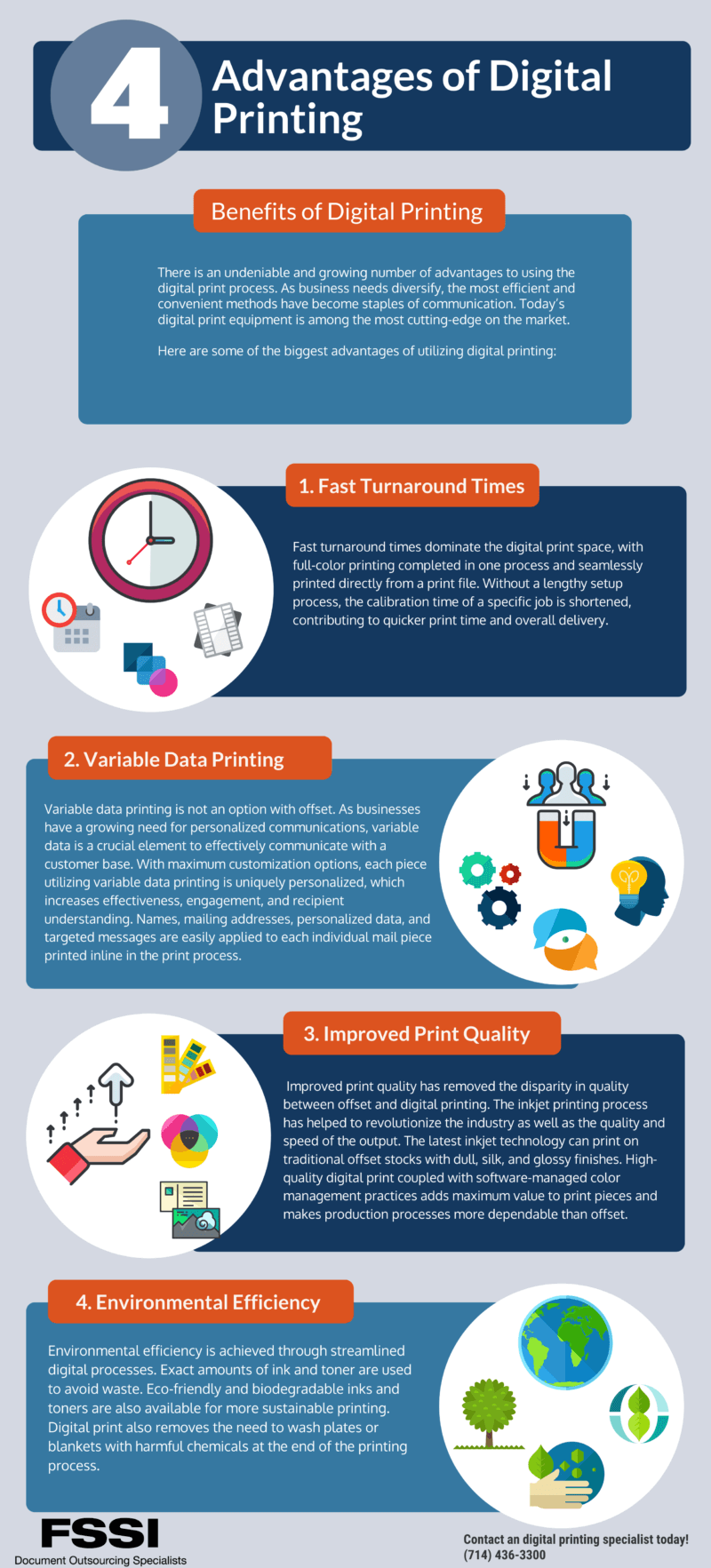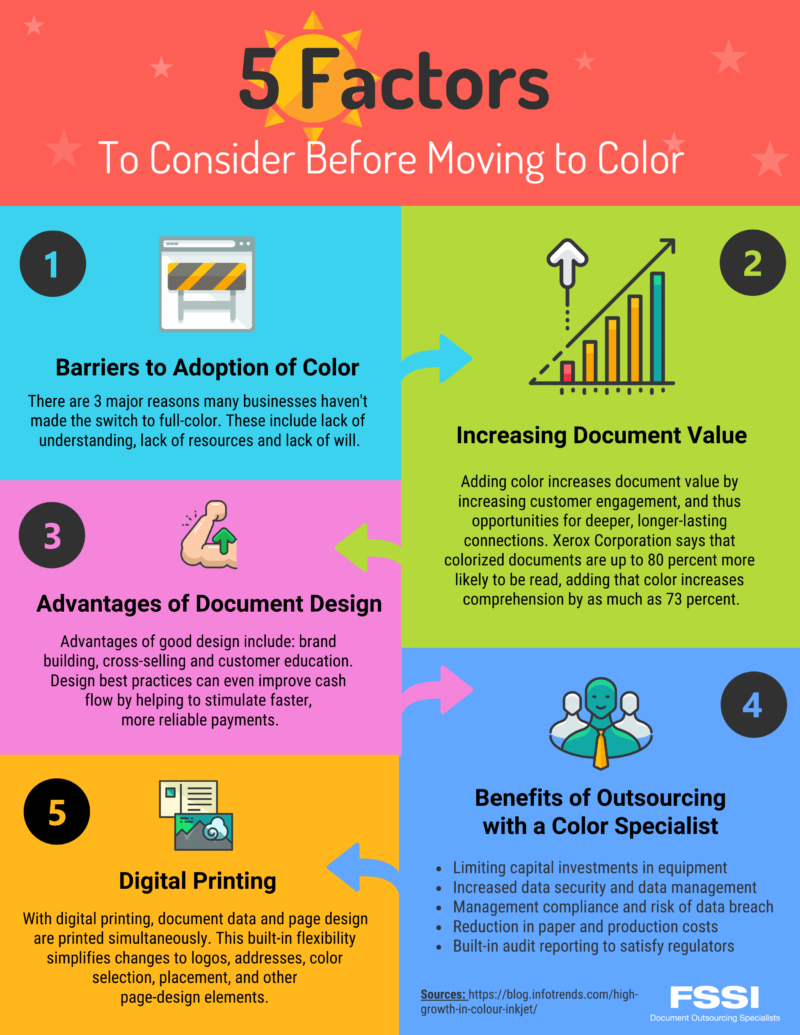The Definitive Guide for Digital Printing
Table of ContentsMore About Digital PrintingSome Known Incorrect Statements About Digital Printing The Best Guide To Digital PrintingThe Ultimate Guide To Digital PrintingThe Main Principles Of Digital Printing Digital Printing Fundamentals ExplainedUnknown Facts About Digital Printing
According to PMMI, digital printing allows brands and producers to react rapidly to client demands while enhancing the supply chain, decreasing warehousing expense and waste, and enjoying faster time to market. That all sounds terrific, however how does this technology do all that? The major differentiator of these modern technologies is that there are no set-up fees and no plates with digital printing.According to Wikipedia, the greatest distinction between electronic printing and traditional techniques such as lithography, flexography, gravure, or letterpress is that there is no need to replace printing plates in electronic printing, whereas in these analog printing approaches the plates are continuously changed. This results in quicker turnaround time and decreases cost when using electronic printing.

9 Simple Techniques For Digital Printing
A lot more supply can imply more waste down the roadway. With conventional printing approaches, short-run printing is simply not feasible. Since a great design can make or break your item, digital printing consistently produces top notch, clear and colorful graphics each time. Digital printing on versatile pouches includes the bright, vivid, and exact graphics that almost bid consumers to get to out and touch them.
Digital printing is the procedure of printing digital-based pictures directly onto a variety of media substratums. There is no demand for a printing plate, unlike with balanced out printing. Digital files such as PDFs or desktop publishing documents can be sent out straight to the digital printing press to print on paper, image paper, canvas, material, synthetics, cardstock and other substratums.
Digital printing is quicker and with the ability of more detail, two factors it's frequently utilized to print product packaging, direct marketing leaflets, and books or magazines. A lot of digital printing presses have historically made use of toner-based modern technology and as that modern technology swiftly evolved, the print high quality matched that of countered presses. Recently, inkjet innovation has actually simplified electronic print access as well as the cost, rate and high quality obstacles dealing with print companies today.
Some Ideas on Digital Printing You Should Know
Offset printing is the excellent service when you need and/or adaptable colour, paper and sizing choices. Digital Printing. Digital printing is excellent for tasks, normally much less than 2,000 copies, and when you need a quick turn-around. So, if you are uncertain what's best for your job, we will deal with you to pick the print method finest matched to your project and budget.
The exact shade matching and flexibility it supplies make it difficult to disregard. Digital printing permits fast and cost-efficient manufacturing without jeopardizing quality, unlike offset printing. It enables smaller print runs and on-demand manufacturing, making it perfect for businesses of all dimensions. Moreover, digital printing, with its impressive color precision and consistency, is a game-changer in the market.
While both have their qualities, there are a number of vital distinctions that establish them apart. Understanding these distinctions can help you make an enlightened choice regarding which approach is best fit for your printing requires. Countered printing has long been the best selection for high-volume business printing. It includes transferring ink from plates to rubber coverings prior to ultimately applying it onto the paper.
Things about Digital Printing
One noteworthy advantage of countered printing presses is their ability to manage a vast array of paper sizes and densities. The offset press can fit numerous products, consisting of glossy or distinctive papers, offering adaptability that electronic printers may have a hard time to match. This printing method relies upon using printing plates to transfer the ink onto the paper, making it a popular option for high-grade prints.
Changes may be needed throughout the print run to keep top quality consistency with printing presses. Digital printing, on the other hand, provides a more structured approach contrasted to balance out press.

Let's explore these advantages and check out exactly how they can profit services. One substantial benefit of digital printing is the removal of costly configuration fees that are connected with balanced out printing. In conventional offset printing, each work calls for the creation of plates, which can be pricey and taxing. With digital technology, there is no need for plates or intricate helpful resources arrangement procedures.
Digital Printing Things To Know Before You Buy
One more cost-saving aspect of digital printing is the capability to publish only what you require. Unlike offset printing, where large quantities should be produced to make the process visite site economically viable, digital printers supply higher versatility. Whether you require a little batch or a single duplicate, digital technology makes it possible for on-demand printing with no additional costs.
Utilizing conventional countered printing would call for producing a huge quantity upfront to attain an appropriate system cost per leaflet. By choosing for digital printing rather, they can publish only the exact number needed at a reduced total cost.: A marketing firm wants to run a direct mail campaign targeting various customer sections with customized pamphlets.
Among the essential benefits of electronic printing for little print runs is its. Unlike balanced out printing, which needs the creation of plates and arrangement time for each task, digital printers can start creating prints almost immediately. This makes them suitable for smaller quantities where time is essential.
Rumored Buzz on Digital Printing
Another benefit of electronic printing is its capacity to create tailored marketing materials. With, businesses can conveniently include customized web content within each published piece. This enables targeted messaging that resonates with various sections of their target market. For instance, a company running a direct-mail advertising campaign can individualize each postcard or brochure based on recipient choices or demographics.

One of the key advantages is the boosted versatility and customization choices that come with digital printing. With electronic printing, making changes to layouts or material throughout the production process is a wind. Unlike conventional offset printing, where making alterations can be time-consuming and pricey, digital modern technology enables for fast and easy modifications.
One more benefit of digital printing is its variable information abilities. This function allows for customized web content to be published on a mass range without sacrificing effectiveness or top quality. Whether you need to personalize each piece with specific names, addresses, or various other special info, variable information printing makes it possible. This degree of customization can substantially improve client involvement and feedback rates.
9 Easy Facts About Digital Printing Shown
Whether you're looking for glossy or matte finishes, textured papers, or specialized supplies, electronic printers can fit different preferences. This flexibility guarantees that your published materials line up with your brand name image while giving an aesthetically attractive outcome. Digital printing truly shines. The capability to customize designs or material throughout manufacturing conserves time and resources compared to standard countered methods - Digital Printing.